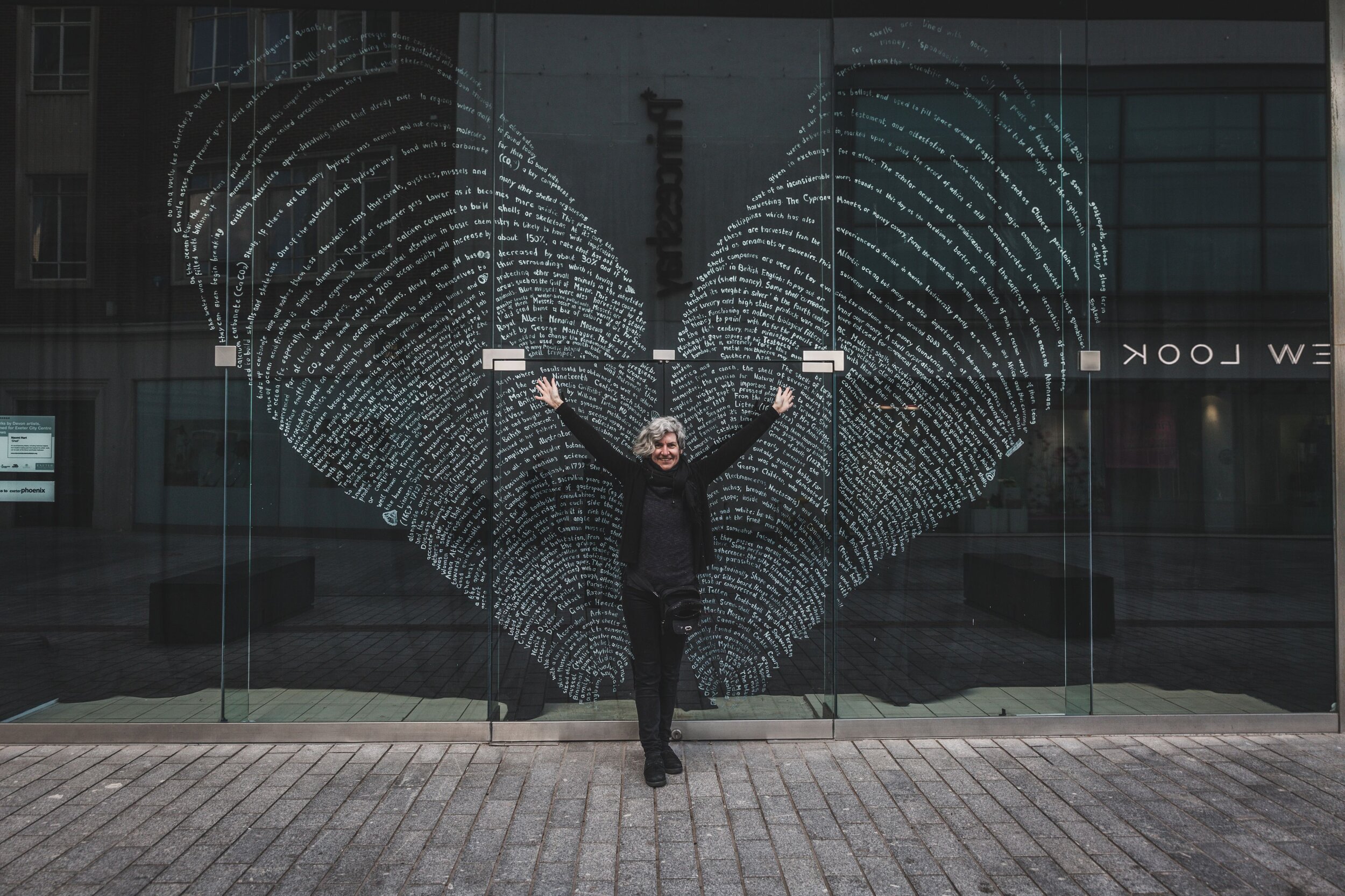Naomi Hart: ‘Shell’
Naomi is an artist whose work looks at human interaction with the environment, especially themes around elements, journey and memory.
Her work ranges from intricate drawings and paintings to large-scale installations. Naomi was Leverhulme artist in residence with glaciologists from Sheffield University and the University of Norway in Svalbard, and exhibited the work at the Royal Geographical Society in London.
Inspired by the Exe Estuary and by 200-year-old books on natural history in the Devon and Exeter Institution (DEI), Naomi is creating an artwork from the ground up. From the women at the centre of international scientific research in 1685 to today, from beachcombing to global trade, from our dinner plates to dinosaurs, ‘Shell’ will tell the hidden stories of science and art.
'Shell'
“Shells are a part of our everyday lives, from the ground we walk on to the food we eat.
“Inspired by 200-year-old books in the Devon and Exeter Institution, I've been looking at the science and symbolism of shells and shellfish: edible mussels in the River Exe, 'shell money' in the Slave Trade, their part in the ecosystem and the effects of climate change on their ability to grow and reproduce.
“Our oceans are warming and becoming more acidic, which breaks down the calcium carbonate in shells. Using shells from the Exe Estuary and lemon juice, I've accelerated and exaggerated this process to produce my own 'chalk'. I'm mixing this with seawater to paint a giant mussel shell on the shop window. The text is taken from various books and articles about shells.
“Women often played a huge part in the scientific and artistic research of shells and shellfish:
“Testacea Britannica (1803): Illustrations by Elizabeth D’Orville, text by George Montagu.
“The year he died, 1815, Montagu gave copies of Testacea Britannica to the science collection at the new Devon and Exeter Institution (DEI) and the shells to his son, Henry D’Orville, who subsequently gave them to the Royal Albert Memorial Museum (RAMM) in Exeter.
“‘Historiae Conchyliorum’ 1685: Engravings by Susanna and Anna Lister text by Martin Lister.
“English translation of 'Lamarck's Genera of Shells', c1820: illustrations by Anna Atkins, text by John George Children.
“Shellfish such as scallops, clams, oysters and mussels are a huge part of our diets and a global industry. They are often filter feeders, extracting organic matter from the sea in which they live and recycling nutrients that enter waterways from human and agricultural sources. Some rock, such as limestone and coquina, is formed from shells, laid down over billions of years.
“In some countries, shells have traditionally been used in ceremonies and as fertility charms in pregnancy and childbirth.
“We talk of 'shell money', which often refers to Monetaria moneta or the money cowrie, historically used as currency in many parts of the world. During the Slave Trade, these were brought from the Indian Ocean to the UK as ballast in ships, then taken to West Africa to be traded in exchange for enslaved people. Many people and businesses in Exeter were deeply involved in this trade.
'“Shell' is a testament to nature, to science and scientists (especially forgotten ones), to the slow accretion of knowledge that has built our understanding of the world, and to the fragility of life and our ecosystem, which we need to nurture and care for.
“Huge thanks to the sponsors and team behind this commission, and to everyone who has helped.”
'Shell', calcium carbonate and seawater, Naomi Hart 2021.
For more information about the artwork and the inspiration behind it, please visit Naomi's website:
Naomi is also part of the Exeter UNESCO City of Literature Compact Commissions programme. You can see her piece for that here.




